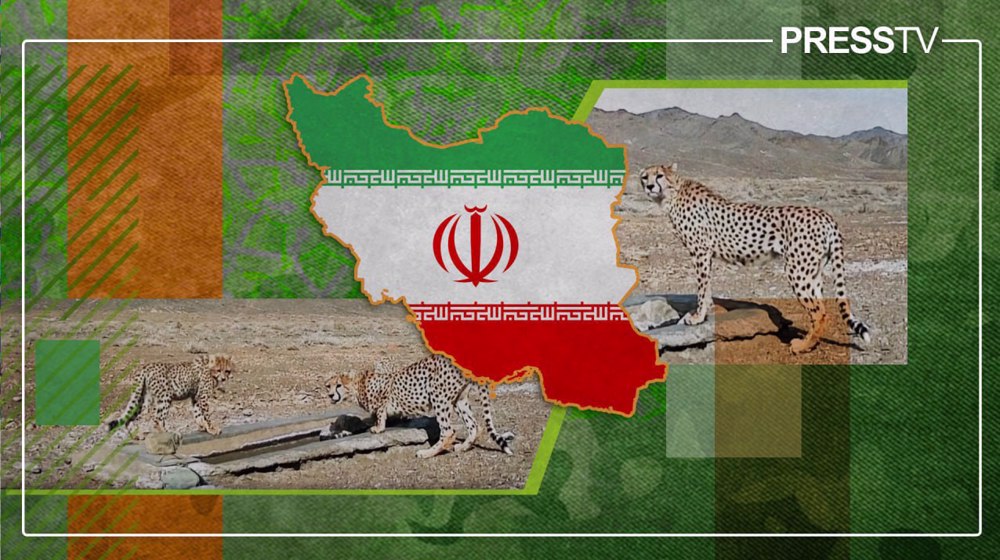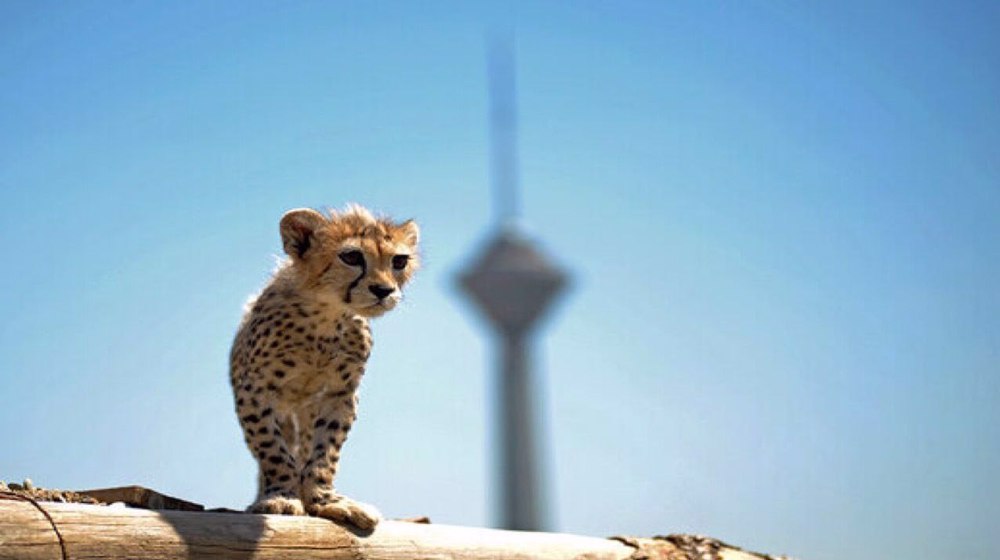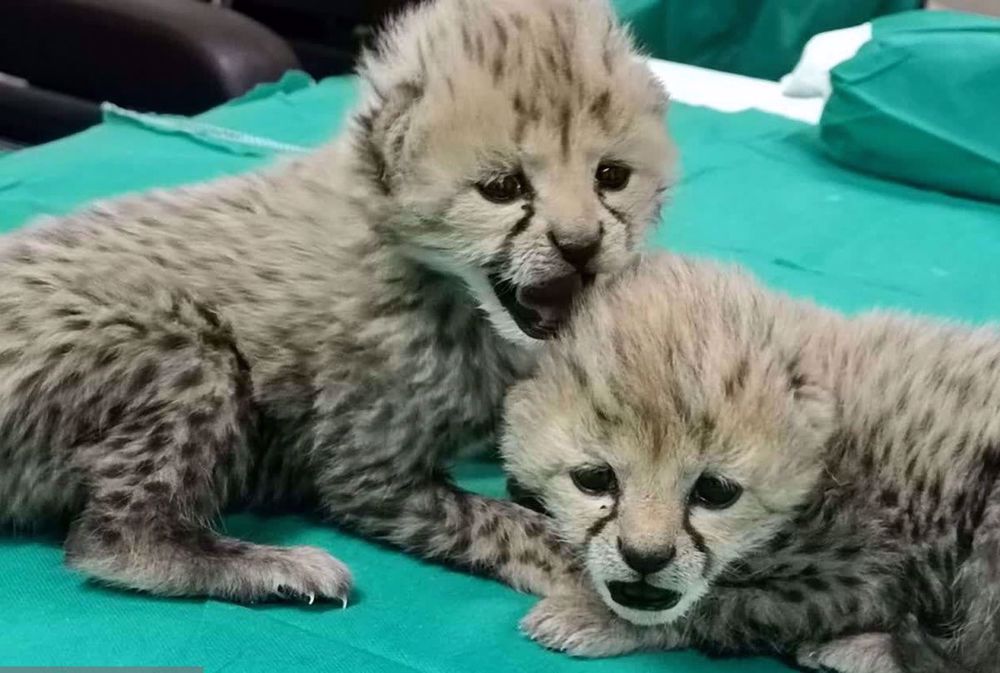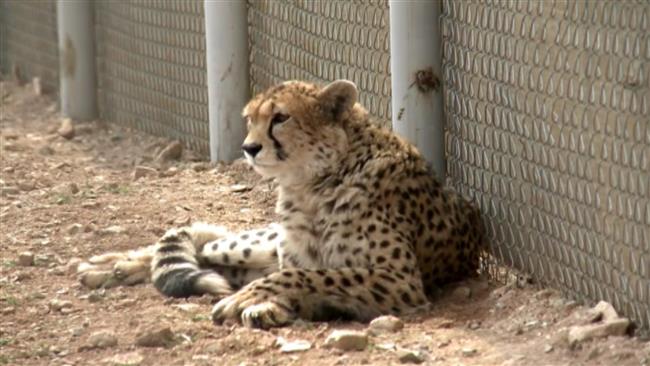Hope rekindled as rare Asiatic cheetah family spotted in central Iran
By Maryam Qarehgozlou
In a promising development for conservationists, a recent sighting of an Asiatic cheetah family in Iran’s central Semnan province has sparked widespread excitement and renewed hope for the survival of the endangered species in the country.
Captured by a strategically placed camera trap, the stunning footage released by the Environmental Protection Department of Semnan province on Saturday featured a mother cheetah “Mahshad” roaming the Turan National Park with her four playful cubs.
Turan National Park is the second largest biosphere reserve in Iran with an area of 1,500,000 hectares, and also a birdwatching destination for nature lovers.
Despite ongoing environmental challenges facing the country, this rare and heartening glimpse into the cheetah family's well-being is being hailed by experts as a beacon of hope, symbolizing progress in safeguarding the critically endangered Asiatic cheetah.
Saeed Yousefpour, Director-General of the Environmental Protection Department of Semnan Province, confirmed to the Press TV website that Mahshad and her cubs were sighted in the area recently.
The newly released footage, he noted, reveals that all five family members appear to be thriving, with the cubs showing remarkable and healthy growth.
“The Turan National Park is under constant monitoring, with camera trap footage being reviewed every two months to assess the health of the cheetahs and determine if they have remained within the habitat or moved elsewhere,” Yousefpour told the Press TV website.
This meticulous surveillance is a crucial part of conservation efforts of the species, ensuring that researchers in the field can track the movements and well-being of one of the world’s rarest big cats.
A significant sighting of an Asiatic cheetah family was recently reported in the Turan region of Iran’s central Semnan province.
— PressTV Extra (@PresstvExtra) February 15, 2025
The female cheetah, named “Mahshad,” and her four cubs were captured on camera traps within the Turan National Park. pic.twitter.com/Xe8vKVbFRK
“Mahshad has done an exceptional job of nurturing and raising her cubs, who are now in good condition, and this success can be attributed to the dedicated efforts of the rangers who have worked tirelessly to ensure the safety and preservation of the cheetahs’ habitat,” he added.
Yousefpour underscored the extraordinary nature of what was sighted, noting that giving birth to four healthy cubs is an unprecedented record for an Asiatic cheetah in Iran.
If these cubs survive the many challenges posed by their fragile existence and reach breeding age, they could represent a significant turning point in the species' struggle for survival, experts say.
As of now, the gender of the cubs remains a mystery, adding an element of intrigue to this already remarkable discovery.
The Asiatic cheetah (Acinonyx jubatus venaticus), a slightly smaller and more slender subspecies than its African cousin, once roamed vast landscapes spanning 16 countries across Southwest and Central Asia.
From the sun-scorched deserts of Saudi Arabia to the rugged terrains of Afghanistan and the Indian subcontinent – nearly reaching the Bangladesh border – they once thrived in a region that now holds only faint echoes of their past abundance.
Today, their range has diminished to a mere fraction of what it once was. Recent estimates suggest that cheetahs now occupy just six percent of their historical habitat.
In the early 1980s, a relentless wave of habitat destruction, land fragmentation, and escalating human-wildlife conflict forced Asiatic cheetahs out of most of their ancestral domains, pushing them to the brink of extinction.
Now, Iran’s vast and arid deserts serve as the species’ final sanctuary in the world, making the country the last bastion of hope for these rare and wonderful felines.
Recognizing the gravity of their plight, the International Union for Conservation of Nature (IUCN) has classified the Asiatic cheetah as critically endangered, securing its place on the Red List of Threatened Species.
Once spread across Iran’s diverse landscapes, these elusive cats have now vanished from the western and southern regions. Their remaining population clings to survival in the desolate mountain deserts of the east, where the sun-scorched terrain shapes both predator and prey.
These rugged landscapes – dotted with vast plateaus, rolling dunes, and jagged peaks – serve as the perfect hunting ground for the world’s fastest land animal.
Like their leopard cousins, Asiatic cheetahs depend on a blend of stealth and sheer speed to chase down fleet-footed ungulates such as wild goats and wild sheep, whose agility makes them formidable prey amid the rocky terrain.
Determined to safeguard the dwindling population, conservationists have deployed an extensive network of camera traps in two critical habitats: the Miandasht Wildlife Refuge in North Khorasan Province and the Touran Biosphere Reserve.
These motion-sensitive cameras have become the watchful eyes of researchers, capturing rare glimpses into the secretive lives of these endangered cats.
Based on photographic evidence and field observations, experts estimate that no more than 30 to 40 Asiatic cheetahs remain in these protected areas a stark reminder of the fragile thread by which the rare species hangs.
Yousefpour told the Press TV website that approximately 17 Asiatic cheetahs have been sighted in Touran alone. Adult cheetahs are identified through the intricate patterns of their spots, each one as unique as a human fingerprint.
He emphasized that “each cheetah has its own unique spot pattern, much like human fingerprints.”
Threats to the Asiatic cheetah
The Touran Biosphere Reserve in Semnan province stands as the most vital sanctuary for Iran’s dwindling cheetah population. Yet, despite its significance, the region is fraught with challenges that place these already vulnerable animals at even greater risk.
One of the primary threats stems from the presence of camels and other livestock, which can disrupt the delicate balance of the ecosystem in multiple ways.
According to Yousefpour, these domestic animals pose both direct and indirect dangers to the cheetahs.
The relentless drought, worsened by climate change and insufficient rainfall, has drastically reduced the availability of water sources. In such arid conditions, unmanaged livestock and camels further restrict the cheetahs’ access to these scarce water reserves, intensifying the struggle for survival.
Additionally, overgrazing by livestock diminishes vegetation cover, which is essential for sustaining the populations of wild prey—the cheetah’s primary food source. A shrinking prey base makes hunting increasingly difficult for these apex predators, further threatening their fragile existence.
Another pressing concern is the presence of sheepdogs, which have been responsible for multiple cheetah fatalities. In recent years, several Asiatic cheetahs have fallen victim to both dogs and human intervention, making it clear that greater protection measures are needed.
Despite these obstacles, efforts are underway to mitigate the threats.
“Semnan’s environmental department has taken steps to manage livestock and camel presence, enhance vegetation cover, and increase prey populations,” Yousefpour said.
He also noted that conservation strategies are being expanded to include cheetah habitats in the north, east, and southeast of Touran, ensuring a broader approach to their protection.
One of the most tragic and preventable dangers facing Asiatic cheetahs is road accidents. The Abbasabad-Mayami road in Semnan has been a particularly deadly stretch, where multiple cheetahs have lost their lives to speeding vehicles over the years.
“Measures such as speed limits, installing lights, and fences have been implemented by the Ministry of Transport and Urban Development, which have shown some effectiveness in reducing road accidents involving cheetahs but still require further improvement,” he said.
However, without continuous monitoring and stricter enforcement, these efforts may not be enough to curb the loss of more cheetahs on the roads.
In addition to these environmental and human-induced threats, manpower shortages in cheetah habitats present another major challenge to effective conservation. A lack of rangers and on-the-ground personnel has hindered efforts to fully implement protection plans, allowing threats to persist.
“Addressing current conservation issues and allocating additional resources for on-the-ground efforts at both national and regional levels will be essential for ensuring the survival of Iran’s Asiatic cheetahs,” Yousefpour told the Press TV website.
As a top predator, the Asiatic cheetah is not just another species fighting for survival—it is a keystone species that plays a crucial role in maintaining the balance of its ecosystem.
Any disruption in the cheetah population could trigger cascading effects throughout the food chain, leading to long-term environmental consequences.
Every species is interconnected, and protecting the Asiatic cheetah would mean safeguarding countless other species and the natural landscapes they call home.
“The extinction of the Asiatic cheetah would have irreversible effects on the ecosystem,” Yousefpour warned, underlining the urgency of immediate and decisive action.
Hamed Aboulghasemi, a dedicated conservationist, delved deeper into the escalating crisis threatening cheetah populations, emphasizing that vast habitat loss remains the most pressing concern.
"Even if we successfully increase the cheetah population through captive breeding, where will we release them when their natural habitats are severely impacted by various factors,” he told the Press TV website.
The efforts to establish captive breeding programs for Asiatic cheetahs took root with Delbar, a female cheetah, and her male companion, Kushki. In 2015, Delbar became pregnant naturally, raising hopes for a breakthrough in conservation. However, heartbreak followed when she tragically lost her cub.
More recently, in May 2022, another female cheetah named ‘Iran’ gave birth to three cubs at the Touran Wildlife Refuge, reigniting optimism. Yet, sorrow hit again as none of the cubs survived.
Aboulghasemi shed light on the forces accelerating cheetah habitat loss, citing factors like desertification, unregulated mining, overgrazing, and unchecked livestock breeding.
"These practices exacerbate the already significant threat to the cheetahs’ natural environment, compounding the challenges faced by conservationists," he said.
Expressing concern over the inefficacy of current conservation strategies, Aboulghasemi criticized their fragmented nature, arguing that the lack of an integrated approach has significantly stalled progress.
He further highlighted the persistent shortages of staff and equipment at the sprawling 1.5 million-hectare Touran Biosphere Reserve, stressing that these deficiencies continue to undermine critical conservation efforts.
Underscoring the intricate link between cheetahs and their ecosystem, he said safeguarding the species is not merely about wildlife preservation but is essential to maintaining environmental balance.
The repercussions of habitat loss extend far beyond the cheetahs themselves, affecting vegetation and giving rise to sand and dust storm hotspots, which pose a threat to both wildlife and human health.
"The decline of cheetah populations and their habitats are intertwined with the welfare of humans. By conserving cheetahs and protecting their environment, we not only preserve the ecosystem but also create opportunities to improve human lives,” he remarked.
Tehran Stock Exchange index hits historic high
3 civilians injured by Israeli fire during incursion into Syria’s Quneitra
Iran’s wheat imports at $424 mln in Apr-Oct: IRICA
Most captives killed by Israeli strikes in Gaza, says former commander
Gaza docudrama 'The Voice of Hind Rajab' nominated for Golden Globe
‘Beyond absurd’: Israel extends ban on foreign media in Gaza
Hamas rules out 2nd phase of Gaza ceasefire while Israeli violations continue
VIDEO | Press TV's news headlines
















 This makes it easy to access the Press TV website
This makes it easy to access the Press TV website